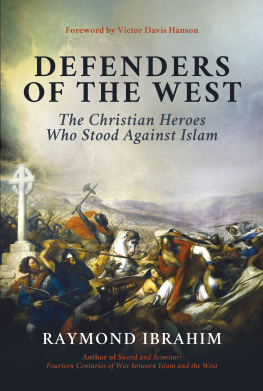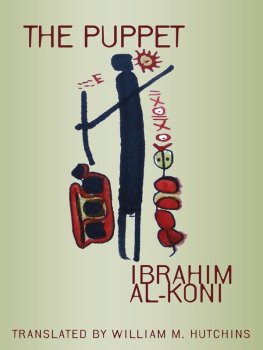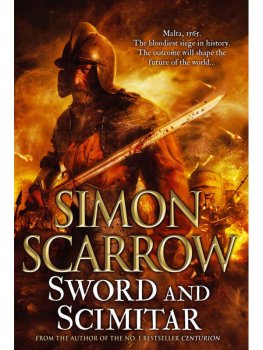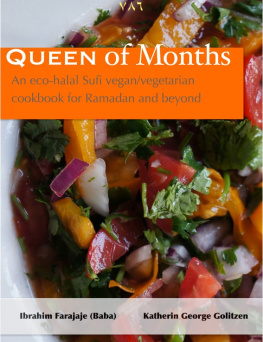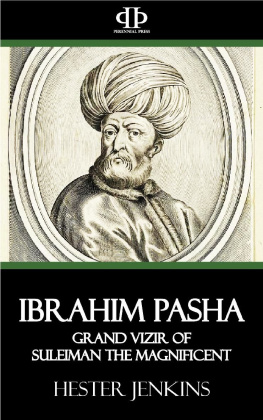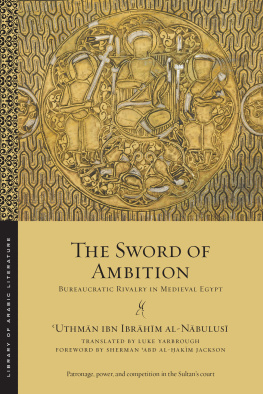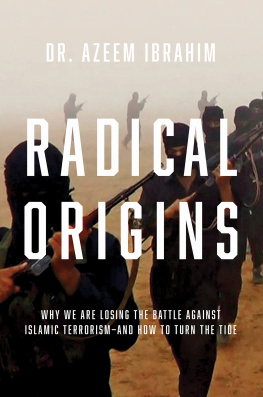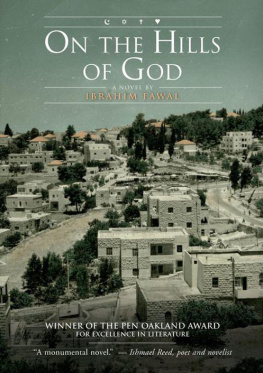Raymond Ibrahim - Sword and Scimitar
Here you can read online Raymond Ibrahim - Sword and Scimitar full text of the book (entire story) in english for free. Download pdf and epub, get meaning, cover and reviews about this ebook. year: 2018, publisher: Da Capo Press, genre: Religion. Description of the work, (preface) as well as reviews are available. Best literature library LitArk.com created for fans of good reading and offers a wide selection of genres:
Romance novel
Science fiction
Adventure
Detective
Science
History
Home and family
Prose
Art
Politics
Computer
Non-fiction
Religion
Business
Children
Humor
Choose a favorite category and find really read worthwhile books. Enjoy immersion in the world of imagination, feel the emotions of the characters or learn something new for yourself, make an fascinating discovery.

- Book:Sword and Scimitar
- Author:
- Publisher:Da Capo Press
- Genre:
- Year:2018
- Rating:5 / 5
- Favourites:Add to favourites
- Your mark:
- 100
- 1
- 2
- 3
- 4
- 5
Sword and Scimitar: summary, description and annotation
We offer to read an annotation, description, summary or preface (depends on what the author of the book "Sword and Scimitar" wrote himself). If you haven't found the necessary information about the book — write in the comments, we will try to find it.
Sword and Scimitar — read online for free the complete book (whole text) full work
Below is the text of the book, divided by pages. System saving the place of the last page read, allows you to conveniently read the book "Sword and Scimitar" online for free, without having to search again every time where you left off. Put a bookmark, and you can go to the page where you finished reading at any time.
Font size:
Interval:
Bookmark:
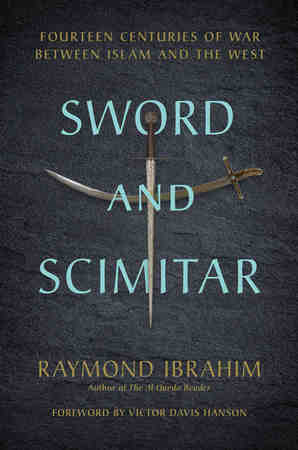
Copyright 2018 by Raymond Ibrahim
Hachette Book Group supports the right to free expression and the value of copyright. The purpose of copyright is to encourage writers and artists to produce the creative works that enrich our culture.
The scanning, uploading, and distribution of this book without permission is a theft of the authors intellectual property. If you would like permission to use material from the book (other than for review purposes), please contact permissions@hbgusa.com. Thank you for your support of the authors rights.
Da Capo Press
Hachette Book Group
1290 Avenue of the Americas, New York, NY 10104
www.dacapopress.com
@DaCapoPress; @DaCapoPR
First Editi on: August 2018
Published by Da Capo Press, an imprint of Perseus Books, LLC, a subsidiary of Hachette Book Group, Inc. The Da Capo Press name and logo is a trademark of the Hachette Book Group.
The Hachette Speakers Bureau provides a wide range of authors for speaking events. To find out more, go to www.hachettespeakersbureau.com or call (866) 376-6591.
The publisher is not responsible for websites (or their content) that are not owned by the publisher.
Library of Congress Cataloging-in-Publicati on Data has been applied for.
ISBNs: 978-0-306-82555-2 (hardcover), 978-0-306-82556-9 (ebook)
E3-20180711-JV-NF
For Shechild, Minitaur, and Alfred.
R AYMOND I BRAHIMS S WORD ANDS CIMITAR IS A MUCH-NEEDED HISTORY of landmark battles between Islam and the West. Ibrahim offers eight representative engagements across time and space from France to the Middle East, and over a millennium from 636 to 1683.
The study is first and foremost riveting military history. It offers blow-by-blow concise accounts of the eight battles, and interprets them in the context of the timesor rather, takes seriously what contemporary leaders claimed were their intentions and how they worked out their strategies. Such a first-hand approach requires extensive work in untranslated Arabic and occasional Greek sources, as well as a general background in comparative military history. For example, in his discussion of the pivotal battle of Yarmuk (near the current Syrian and Jordanian border), Ibrahimwho previously worked with various languages and manuscripts at the African and Middle Eastern division of the Library of Congress in Washington, D.C.marshals together a diverse body of sources to offer a more accurate reconstruction of the battle that makes sense of how the numerically superior Byzantines suffered such an inexplicable and catastrophic loss.
Beyond its value as a meticulously researched chronicle of the major (and many minor) engagements between Islam and the West, the book advances larger cultural and religious arguments. Ibrahims purpose is not to suggest inherent Western or Islamic cultural dynamism; indeed, he has selected four exemplary Western defeats (the fall of Constantinople, Hattin, Manzikert, and Yarmuk) balanced by four victories (second defense of Constantinople, Las Navas de Tolosa, Tours, and Vienna). Instead, Ibrahims evidence reveals certain recurring themes about the interaction between Islam and the Westan entity rarely any more defined as Christendomthat are presently either often ignored or underappreciated.
First, in most cases Islamic armies saw themselves as expansionary and messianic, eager to engage the West and annex its territory and convert its people. Inasmuch as Western armies were on the offensive, it was in the context of their belief that they were reclaiming areas of the Middle East, Northern Africa, Southern Europe, and Asia Minor that had been Roman or earlier belonged to the Hellenistic Greek world for over a half millennium before the birth of Islam. This may seem a self-evident point, but Ibrahim locates the tensions in the context of the times, in which Muslim forces at least saw themselves as absorbing formerly Westernized states and Western armies saw themselves as retrieving land that had been Roman or Greek for centuries.
Second, while there were localized and intramural political and tribal rivalries, Muslim armies went to war against the West more often as religious rather than as national or ethnic forces, and their warring against the Westerners was so seen as mostly a monolithic struggle against Christendom rather than particular European states. In turn, Western armies, while fragmented and marked by factions and political rivalries, still saw their common bond of Christianity as the only way to unite to fight off Islam.
Again, respective religious chauvinism seems another obvious observation, but quite often contemporary historians have tried to downplay any notion of a religious clash of civilizations. In this context of religious tensions, Ibrahim often investigates diverse epochs and cultures rarely associated with the traditional theaters of conflict between Islam and Christendom, such as the lasting bitterness that followed in Russia from the so-called years of the Tartar yoke, and the Ottoman impediments to overland trade from Europe to the East that were catalysts for the Portuguese and Spanish voyagers to the New World, who initially had sought ways to squeeze Islam from both the West and new outposts in Asia.
Third, Ibrahim sees a continuity between past and present; that is, Muslim religious leaders and jihadists have characteristically seen Christianity as both antithetical to the Islamic world and inherently ripe for conquest or conversion. Westerners, in turn, have likewise over the centuries concluded that Islam was inconsistent with Christian values, and have seen tension and conflict rather than conciliation and peace as the more normal state of affairs. If current Islamists reflect age-old antipathiescompare the messaging of the Islamic State, their zealotry intentionally patterned after the dogma of their predecessorsso too Western reactions to them are far from sudden outbreaks of prejudice and xenophobia, but rather the self-defensive mechanisms of nearly 1,400 years.
Similarly, Ibrahim goes to some length to highlight little known methodologies of Muslim historiographyeither due to linguistic difficulties or because criticism of them is considered politically incorrect. His critique is not that Muslim historiography is necessarily more or less reliable than Western sources of past conflict. Rather, Ibrahim argues that study of the craft of Muslim historians reminds us of how the Islamic worlds account of religious tension with the West is remarkably consistent across time and different from the Western approach.
Fourth, often Muslims enjoyed as much, if not more protection living in Christian lands than did Christians in Islamic landsand often without special taxes and levees predicated on their non-Christian status. In his descriptions of these battlefield collisions, Ibrahim demonstrates an asymmetry that is not just culturally relative, but instead reveals absolute different notions of forbearance. His point is not that Christians were saints and Muslims sinners, but that over the centuries, and with ample moral latitude given to the times, there was less of a Sermon on the Mount tolerance inherent in Islamic fundamentalism than in its Christian counterpartand such antithetical customs were apparent before, during, and after battle with obvious ramifications for eventual outcomes.
Sword and Scimitar is first-rate military history and a product of solid scholarship and philological research. It characteristically offers candid appraisal of a rivalry that has now taken on quite different incarnations and played out on different frontsfrom contemporary immigration to terrorismbut still in many ways remains an ancient existential struggle nonetheless.
Font size:
Interval:
Bookmark:
Similar books «Sword and Scimitar»
Look at similar books to Sword and Scimitar. We have selected literature similar in name and meaning in the hope of providing readers with more options to find new, interesting, not yet read works.
Discussion, reviews of the book Sword and Scimitar and just readers' own opinions. Leave your comments, write what you think about the work, its meaning or the main characters. Specify what exactly you liked and what you didn't like, and why you think so.

